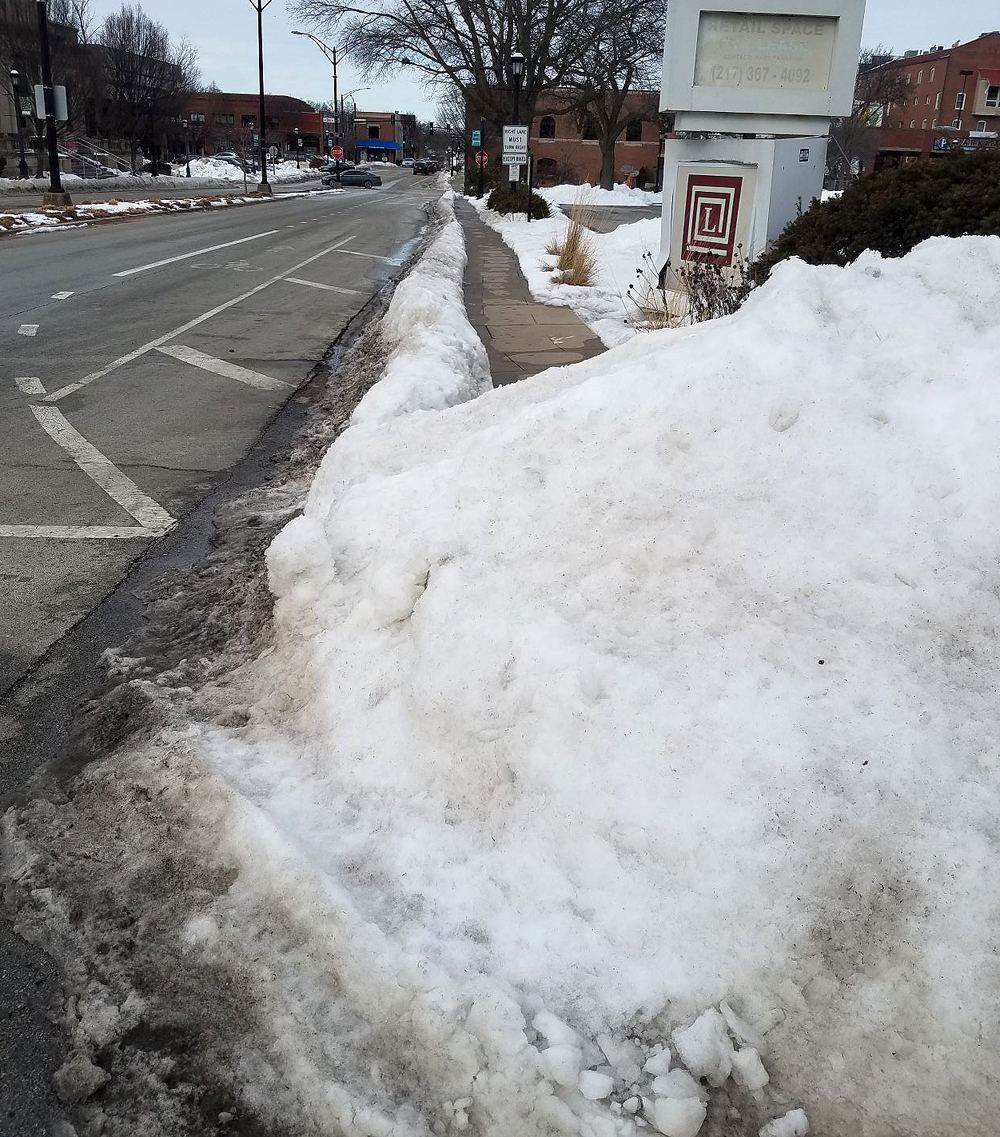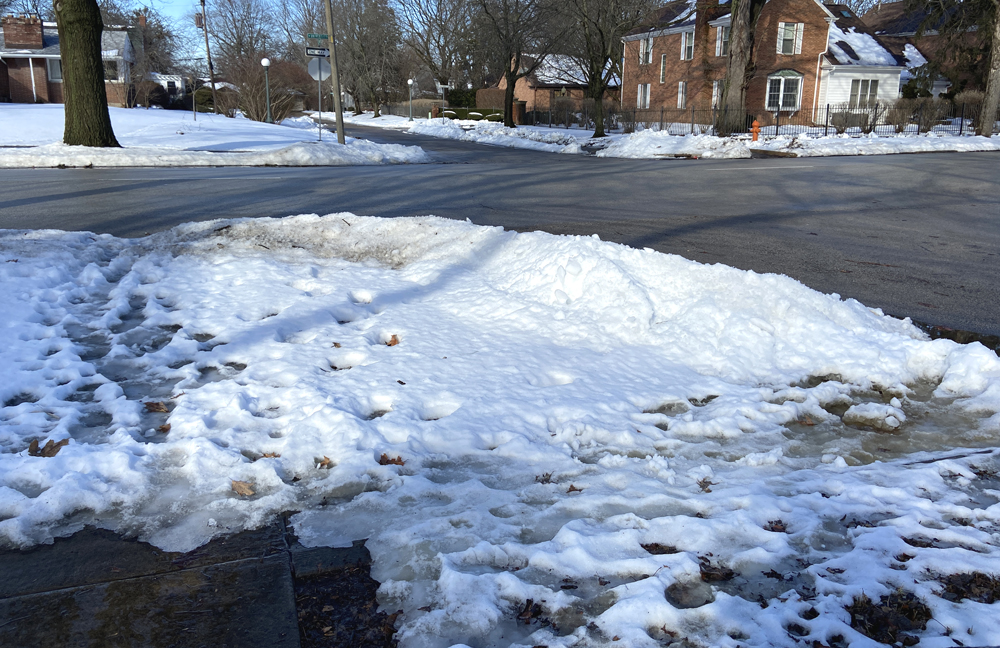When was it safe for you to venture out after last Wednesday’s storm?
For the able bodied with easy access to a car, the answer is Friday or Saturday. Dedicated city staff were working around the clock to clear snow from roadways, and as long as you didn’t turn into any large snow piles you could get around.
For everyone else, the answer is “When the ice melts, I guess.”
Storms like the one we got last week draw stark dividing lines between drivers and everyone else in our community. If you’re driving, you get priority road clearance and the safety of a warm car to get to your destination — with a clear parking space at the end. The rest of us are left to struggle and slip over mountains of ice, forced to walk in the road with fast-moving vehicles or cross mid-block when sidewalk access abruptly ends. Those with balance or mobility issues are trapped inside until spring.
Per capita deaths and injuries for walkers and bikers in our little Midwest town are equal to, and in some cases exceed, those of large cities like Boston and New York. The automatic response is to blame the behavior of pedestrians. Why were they in the road? Why were they wearing dark clothes? They shouldn’t have been looking at their phone. They should have made eye contact with the driver.
Responses like these demonstrate a fundamental misunderstanding of why so many residents are killed or seriously injured by drivers. Getting around on foot in Champaign-Urbana requires constant mental calculations, weighing danger against efficiency.
Here is a choice: Do you struggle through knee-high snow on the sidewalk for a solid mile, possibly while carrying grocery bags? Or do you walk on a dark road with no shoulder and fast-moving traffic? This is not hypothetical. Every pedestrian for the last week attempting to use the Neil Street overpass bridge in Champaign has had to make this calculation. The bridge’s sidewalk is covered in packed ice, while IDOT and the City of Champaign squabble over who is responsible for clearing it.

Race and Green, Urbana. Photo by Deborah Liu.
Here is another: Do you climb over a four-foot pile of ice so you can use the crosswalk, possibly with a young child in tow? Or do you cross midblock across four lanes of traffic, checking in both directions before dashing across, and hope that you don’t sprain an ankle on the curb buried by slush? This is not hypothetical. The pedestrian crossings at Main and Vine in Urbana have been efficiently walled in by truly impressive berms of icy snow, blocking the ADA-required curb cuts. They’ve been that way ever since the property owner cleared their parking lot and dumped the snow to block the crosswalk.
Inequities of this type existed before the storm. If you live near Cunningham Avenue in Urbana and wish to cross Cunningham to access businesses on the other side, there is no safe way to do so. Marked pedestrian crossings are separated by nearly half a mile. On a bright summer day, using a marked crosswalk requires an extra 20 minutes of travel time. When the sidewalks are covered in snow and ice — as they have been for well over a week — it becomes an hour-long ordeal. The pedestrian infrastructure has always been deficient, but now it is unusable.
Why did the pedestrian, tragically killed by an unimpaired and now deeply shaken driver, cross the five-lane road with traffic moving at 40 miles an hour? Because their city failed to implement even the most basic common-sense policies and infrastructure improvements to keep them safe.
Let me be extremely clear: it does not have to be this way. It’s true that creating better streets, — the sort that encourage walking or biking instead of driving and make your city a healthier, less stressful place to live — can take years, but we can start smaller. We can start by implementing snow removal policies that don’t actively sabotage your ability to walk safely.
First, city plows should not throw up snow in a way that blocks curb cuts. This is free. A second pass or a modification of the plow tilt at corners prevents giant walls of ice at intersections.
Second, sidewalk snow removal ordinances should be expanded city wide. Yes, it’s inconvenient to shovel your sidewalk. It’s also inconvenient to walk in the street and hope that the driver of a two-ton vehicle (who will almost certainly kill you if they hit you) sees you in time.
Perhaps the idea of shoveling your sidewalk is a dealbreaker. Might I suggest that the city clear your sidewalk instead? Rochester, New York, where the snow is measured in feet rather than inches, provides sidewalk snow clearance at a cost of about $40 per year in property taxes.
Why did the pedestrian decide to walk to their destination, trading carbon emissions and a stressful drive for a safe, enjoyable, and healthy mode of transport? Because their city leaders had the imagination, foresight, and compassion to make it an attractive choice.
Deborah Liu rides her bike and advocates for fun, safe, car-free transportation options. Folllow her on Facebook.








